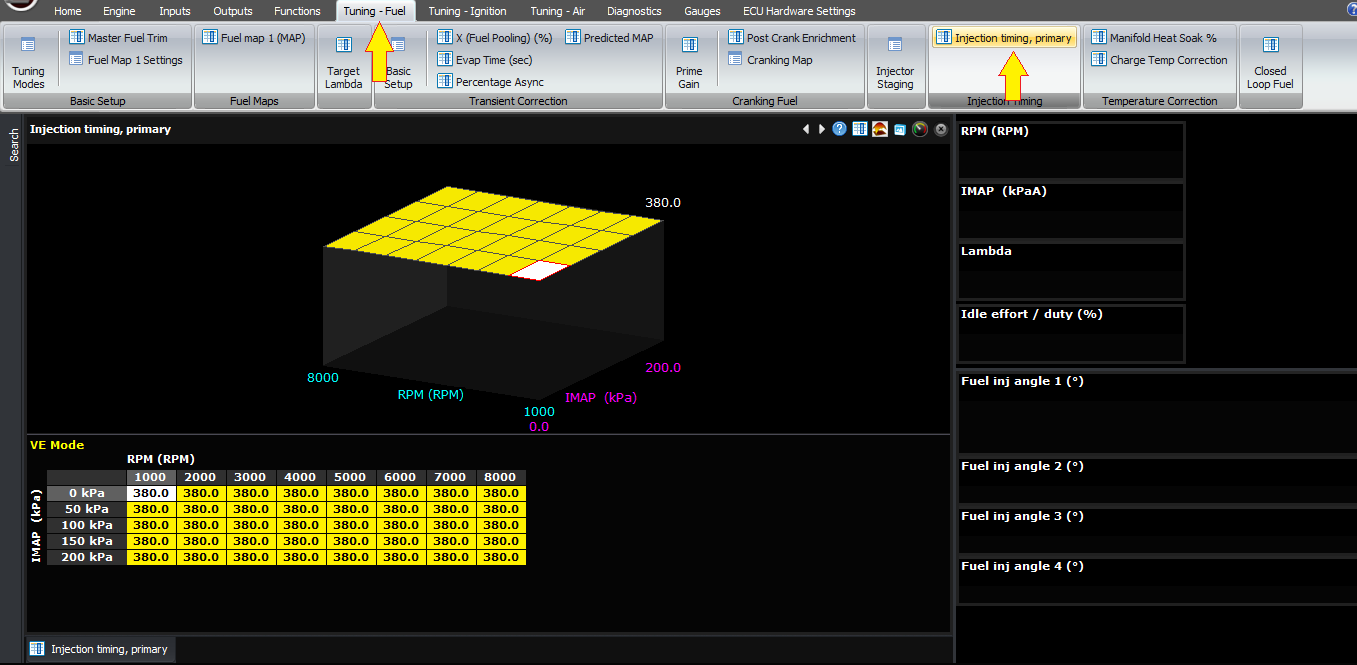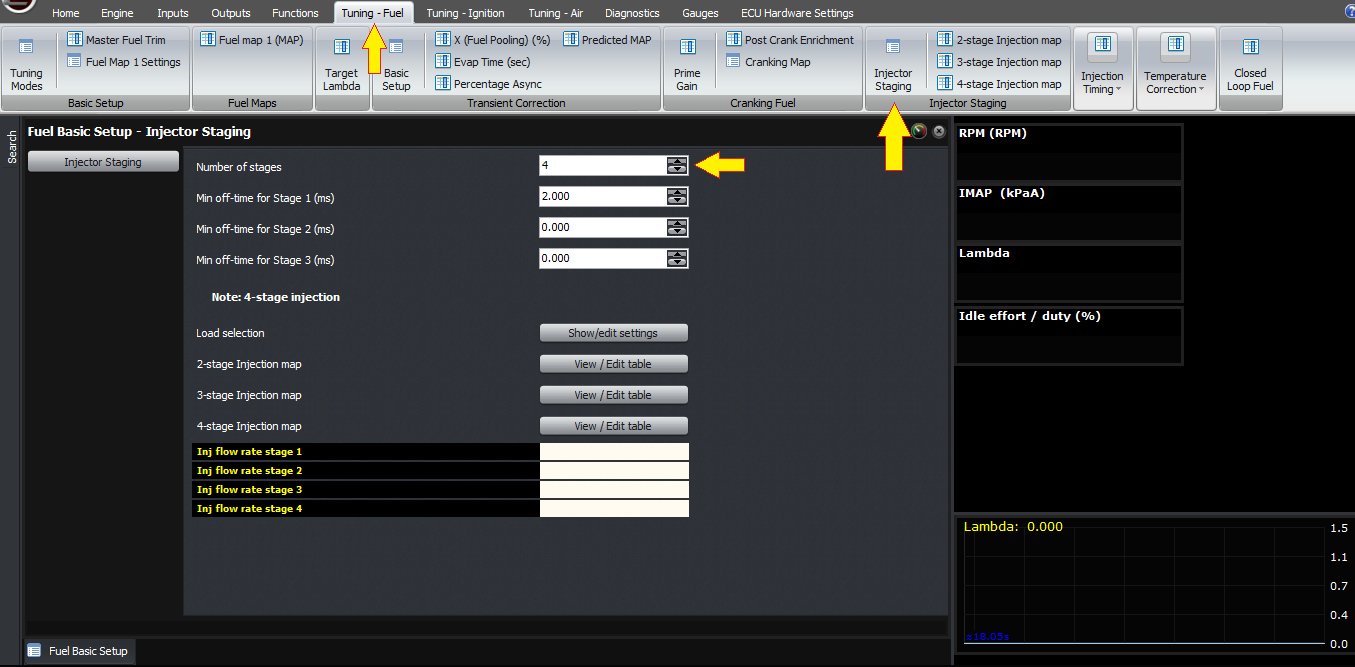Injection Timing on Port Injected Engines on Modular ECUs

This article is very brief and just
covers the timing of injector outputs on port injection
engines. It does not cover direct injection systems.
Injector timing on the Modular ECUs can be mapped against RPM and load, and the number represents the end of the injection pulse in degrees BTDC.
Injector timing on the Modular ECUs can be mapped against RPM and load, and the number represents the end of the injection pulse in degrees BTDC.

Injector Timing Table
On a staged injection engine, you can set the injection timing separately for each stage, to promote better mixing, minimise water hammer in the fuel rails and so–on.

Number of injection stages can be found under “Injector Staging”

Injection timing can be set separately
In terms of appropriate values for injection timing, there are a few possible ways to do it, and to some extent it depends on what you’re trying to optimise.
One technique I’ve seen people do is to adjust the injection timing until the indicate air-fuel ratio is richest (given constant fuel delivery), indicating that the combustion is most complete (least air left over). I don’t know if corresponds to any other real world effects such as minimum emissions or maximum torque, both sound reasonable but I won’t believe it until I see some data.
A common technique is to do what they call closed valve injection, where the end of the injection pulse happens before the intake valve opens. This requires a value of about 380° or higher. For the off-idle throttle response, injection timing can make a big difference and I’ve found values like 380 work fairly well.
Throughout medium to high RPM and on load, injection timing can have an impact on torque, depending on the engine. On a production engine it makes less of a difference than on a high overlap engine in my experience.
Another use for adjusting injection timing is to minimise HC emissions. On a large-overlap engine, for example an engine with big cams, often emissions will be lower by injecting the fuel after the exhaust valve has closed. This means that no fuel can “short circuit” the engine under open throttle conditions. In tuning cars for emissions I’ve found this makes a big difference, but you’ll need a 4 or 5 gas analyser to see it.
Rotaries I’ve found like values around 180 degrees to have decent off-idle response, and side-port engines don’t seem very sensitive to injection timing. Naturally aspirated peripheral intake port engines are a different story however.
Finally, as I mentioned before you can set the timing differently on different stages if you want to. When I tried this on my 13B turbo before she went to a better place, I didn’t find it made any difference to torque at all, but one tuner has told me it does so the option is there in case you need it. At the very least you can ensure that you don’t have multiple stages with the same end of injection angle adding to the water hammer effect of the injectors closing.
Thank you.
©2018 Adaptronic